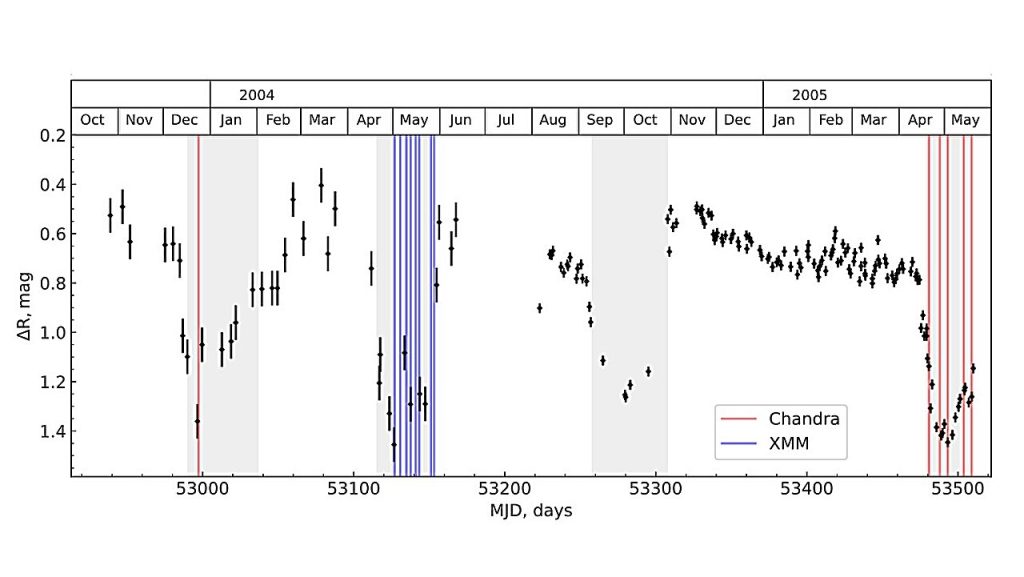
Astronomers investigate the evolution of a supersoft X-ray source (Image Credit: Phys.org)

Using ESA’s XMM-Newton satellite and NASA’s Chandra spacecraft, German astronomers have observed a supersoft X-ray source designated RX J0513.9−6951. Results of the observations, published on the arXiv preprint server, shed more light on the evolution of this source.
Supersoft X-ray sources (SSS) are a subclass of cataclysmic variable (CV) systems. They are thought to be accreting white dwarfs (WDs) in close binaries, with thermonuclear burning on their surfaces. Such systems also have a high mass accretion rate.
Discovered in 1993, RX J0513.9−6951 (or RXJ0513 for short) is a luminous transient SSS in the Large Magellanic Cloud (LMC). Previous observations of RXJ0513 have found that it exhibits strong emission lines of hydrogen, helium and several higher ionization emission features, indicating the presence of an accretion disk.
The system showcases recurrent low states in the optical band, lasting 20−40 days, which repeat every 100−200 days. Moreover, these optical low states are accompanied by X-ray outbursts, so the optical and X-ray states are strictly anticorrelated.
In order to better understand this behavior of RXJ0513, a team of astronomers led by Andrey Tavleev of the University of Tübingen in Germany decided to inspect this system with XMM-Newton and Chandra.
“In this work, we performed a spectral analysis of the supersoft X-ray source RX J0513.9−6951, which was observed in X-rays by the Chandra and XMM-Newton telescopes during its optically low states, when the source exhibits maximum X-ray brightness,” the researchers wrote in the paper.
The observations found that the photospheric radius of the white dwarf in RX J0513.9−6951 and its bolometric luminosity increase as the optical flux decreases, and vice versa. Furthermore, it turned out that when the optical brightness decreases, the system shifts towards the stable-burning strip.
The study also found a correlation between the photospheric radius of the white dwarf and the magnitude of the source in the R-band, as well as between the bolometric luminosity and R-band magnitude. However, this finding challenges the contradiction model, which predicts the opposite correlation between the photospheric radius and optical brightness.
Therefore, the authors of the paper propose an alternative model of RXJ0513 periodicity. In their model, the far ultraviolet/soft X-ray flux is reprocessed into the optical band due to multiple scattering in the cloud system above the accretion disk. The scientists suggest that the cloud system becomes highly saturated when the white dwarf has relatively low luminosity and a small radius, comparable to that of a cold WD.
“A relatively small and low luminous WD photosphere provides better conditions for cloud formation. Consequently, the effective optical thickness of the cloud slab increases, and we observe the bright optical state of the source, accompanied by the faint X-ray flux,” the researchers concluded.
More information:
A. Tavleev et al, Examining the evolution of the Supersoft X-ray Source RX J$0513.9-6951$, arXiv (2024). DOI: 10.48550/arxiv.2411.14273
Journal information:
arXiv
© 2024 Science X Network
Astronomers investigate the evolution of a supersoft X-ray source (2024, November 28)
retrieved 28 November 2024
from https://phys.org/news/2024-11-astronomers-evolution-supersoft-ray-source.html
part may be reproduced without the written permission. The content is provided for information purposes only.







